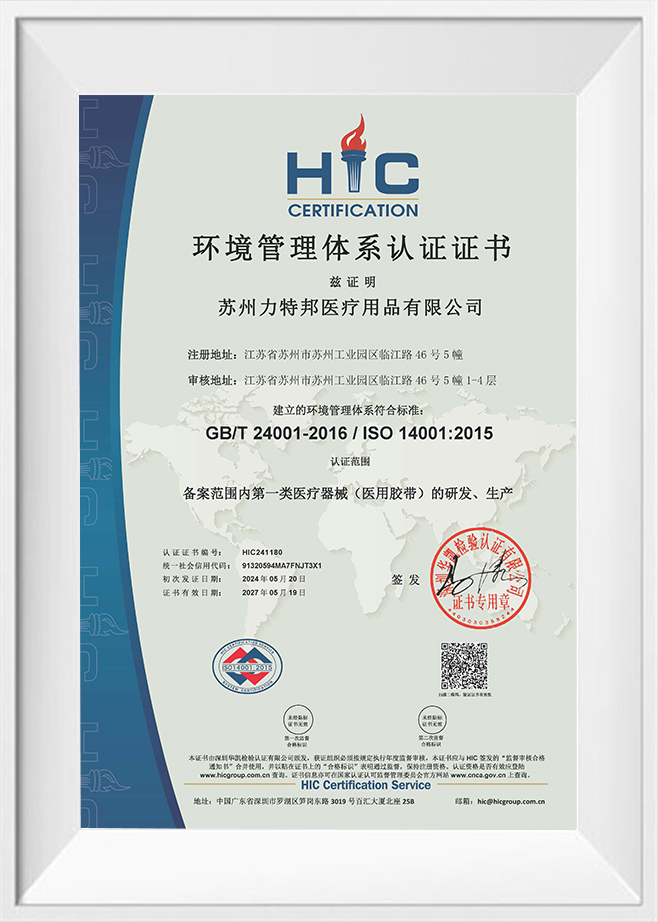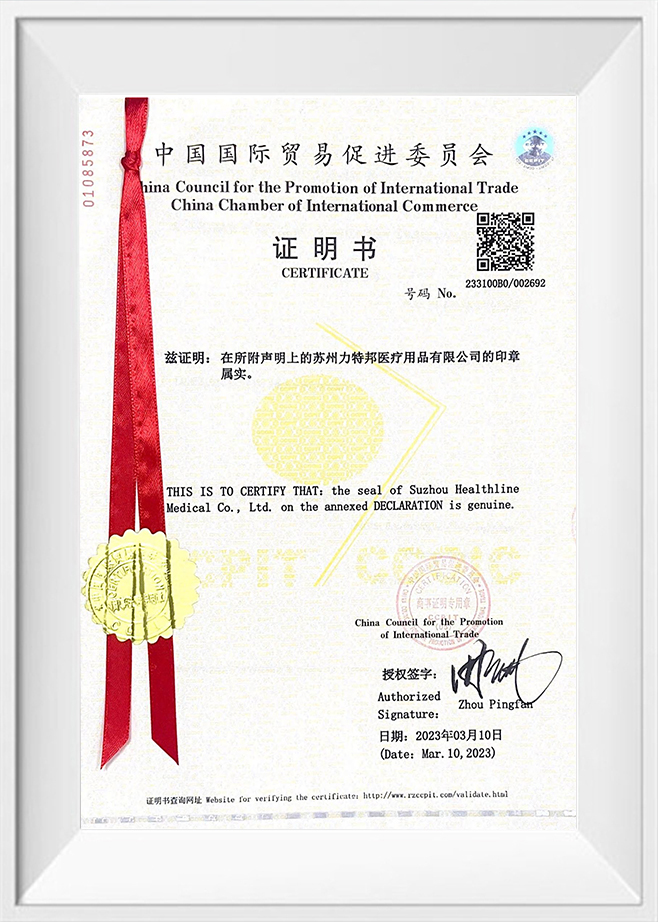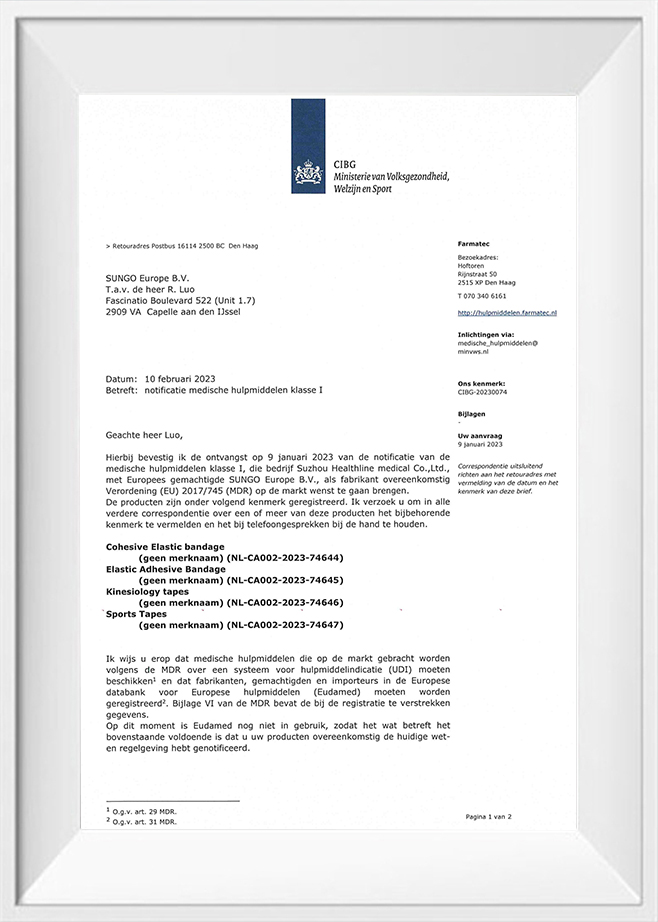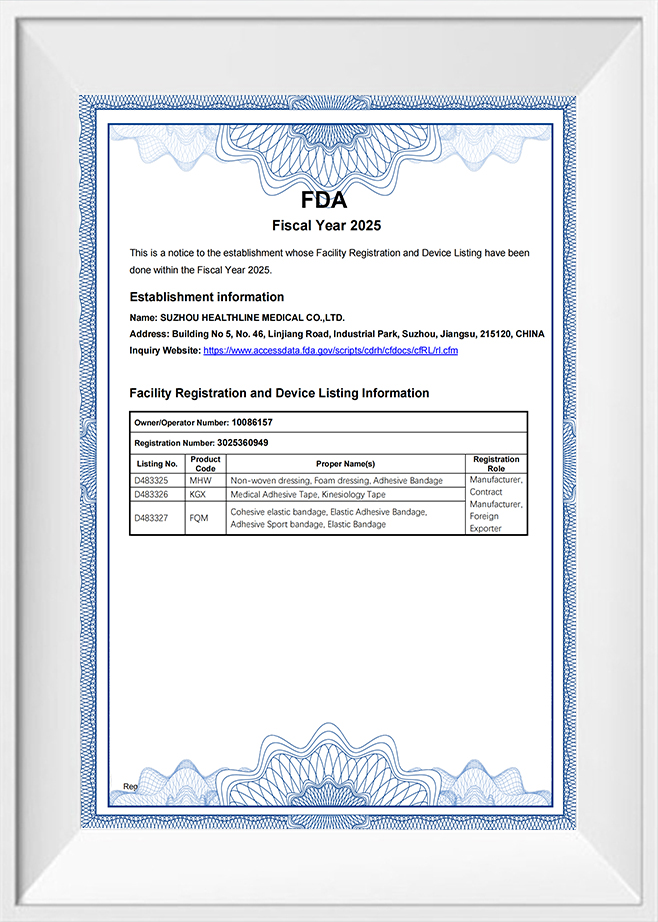Porous Elastic Tape has become an essential tool in sports medicine, physiotherapy, and daily injury management. Its uni...
READ MORERigid Sports Tape Manufacturers
Sport tape serves a dual role by providing dynamic joint/muscle support and injury prevention through targeted compression during physical activities. Widely used in competitive sports to enhance performance and reduce strain on knees/shoulders, it also aids post-surgical rehabilitation in orthopedic departments and acts as temporary splinting material in emergency care. Constructed from breathable cotton-elastane blends, it offers adaptive stability without restricting movement. Suzhou Healthline Factory specializes in ISO 13485-certified medical-grade tapes for sports training, clinical settings, and home care, integrating advanced adhesive technologies for secure yet skin-friendly wear across global applications.
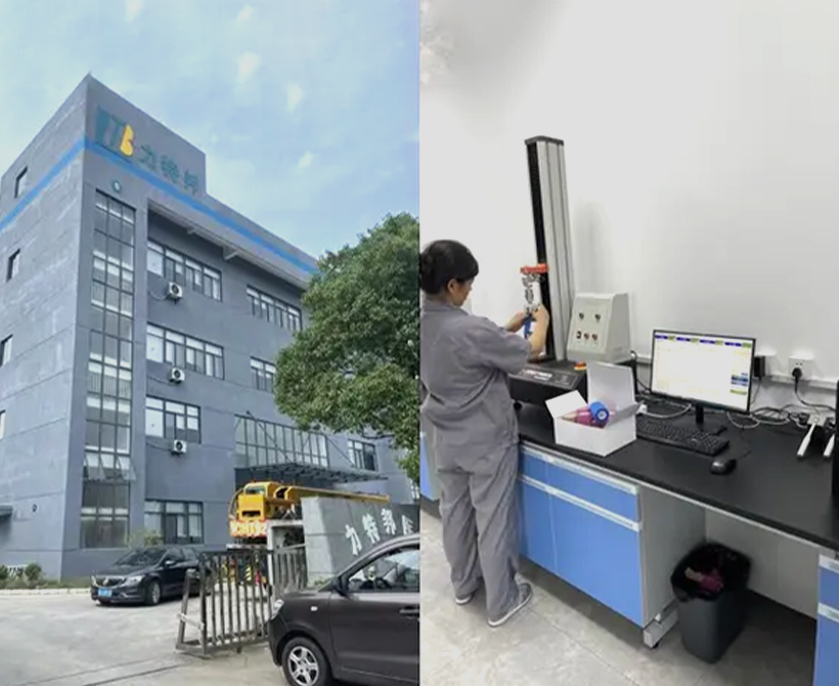
Healthline Medical specializes in designing and manufacturing cohesive bandages, elastic adhesive bandages, kinesiology tapes and sports tapes with the research of fabrics process and coating technology in medical、sports、therapy and veterinary fields. We aim to provide our customers with OEM products as well as one-stop ODM service. Professional Rigid Strapping Tape Manufacturers and OEM/ODM Sports Strapping Tape Factory. Since 1993, we have been in the medical supplies business and exported our product to the customers in the U.S.A, Europe, Asia and Africa, In the year of 2021, we founded and restructured newly Suzhou Healthline Medical Products Company to strive to the continuous growing and business development, and fulfil our commitment of quality and differentiated products with 30 years knowhow and persistent innovation. As a professional supplier, we focus on the aid kit, medical products, and health-care products. Supply Sports Strapping Tape Wholesale. We have got the ISO13485 certificate. And there are CE certificate and related FDA certificates for the products. With clients from all over the world, including level importers, pharmacies, markets, and supermarkets, we are fully aware of the needs of different customers. And We believe we'll know you as good as we know ourselves.
-
-
Athletic Finger Tape and regular medical tape may appear similar at first glance, but they serve different purposes, are...
READ MORE -
In an era where appearance and confidence often go hand in hand, the demand for non-invasive beauty solutions continues ...
READ MORE -
Self-adhesive bandages are one of those quiet yet brilliant inventions in modern wound care. They hold firmly, stretch c...
READ MORE
Healthline Medical: Specialists in Medical and Sports Tapes, Including Rigid Strapping Tape, Since 1993
Healthline Medical specializes in designing and manufacturing high-quality cohesive bandages, elastic adhesive bandages, kinesiology tapes, and sports tapes. With over 30 years of know-how and persistent innovation since our founding in 1993, we leverage advanced fabric and coating technology to serve the medical, sports, therapy, and veterinary fields. We aim to provide our customers with top-tier OEM products as well as comprehensive one-stop ODM services.
Using rigid sports tape correctly is crucial for providing effective support and preventing skin irritation or circulatory problems. Unlike elastic kinesiology tape, rigid sports tape is non-stretchy and designed to immobilize a joint or limit its range of motion.
Here are the key application techniques to ensure you're using sports strapping tape effectively and safely:
1. Skin Preparation is Essential
Clean and Dry: The area must be clean, dry, and free of any lotions, oils, or sweat. The tape won't adhere properly to oily or moist skin, which can also lead to irritation.
Hair Removal: Shave or trim the hair from the area 12 hours before taping. Short stubble can cause discomfort upon tape removal, and the hair can prevent the rigid sports tape from sticking properly.
Protect Damaged Skin: Never apply tape directly over open wounds, scrapes, blisters, or irritated skin. Use a bandage or a protective underwrap for these areas.
Underwrap or Pre-Taping Spray: For sensitive skin, or if you plan on taping regularly, use a foam underwrap or a pre-taping spray. These products create a protective barrier between the tape and the skin, improving adhesion and reducing the risk of irritation.
2. Application Techniques for Support and Circulation
Anchor Strips: Start by applying anchor strips at the top and bottom of the area you are taping. These strips serve as the foundation for the entire taping structure. Apply them firmly but without tension to avoid constricting blood flow.
Bridge the "Weak Area": The principle of rigid taping is to bridge over the injured or unstable area. This means you start the tape on a stable area, bridge it over the joint or muscle needing support, and then anchor it on another stable area.
Smooth and Firm Application: Apply the tape smoothly and firmly, being careful to avoid wrinkles or folds. Wrinkles are a common cause of skin irritation and blisters because they can create pressure points. If a wrinkle forms, it's best to reapply the strip.
Apply with Tension, Not Tightness: The goal is to provide support, not to cut off circulation. Apply tension to the tape only when bridging over the unstable area to limit unwanted movement. The anchor strips and the ends of the tape should be applied without tension.
Check for Circulation: After taping, always check for signs of compromised circulation. Look for any changes in skin color (paleness or a bluish tint), coolness to the touch, numbness, or a "pins and needles" sensation. You should also check the capillary refill time by pressing on a nail bed or the skin below the tape. If it takes longer than 2-3 seconds for the color to return, the tape is too tight and must be re-applied immediately.
Minimal Tape: Use the minimum amount of tape necessary to achieve your objective. Over-taping can be overly restrictive and may increase the risk of skin issues.
3. Proper Removal
Don't Rip It Off: To prevent skin damage, do not yank or rip the tape off quickly.
Slow and Gentle Removal: Gently and slowly peel the tape back, pulling parallel to the skin and in the direction of hair growth. You can use your other hand to apply pressure to the skin, pushing it away from the tape as you go.
Tape Removal Products: Use a rigid sports strapping tape removal spray or liquid, or soak the tape with a wet washcloth, baby oil, or rubbing alcohol to help loosen the adhesive.
Post-Removal Care: After removal, wash the skin with soap and water to remove any remaining adhesive and then apply a moisturizing cream. If you experience any skin damage, apply an antiseptic ointment.
Important Note: Taping is not a substitute for proper diagnosis and treatment. If you have an injury, it's best to consult with a physical therapist, athletic trainer, or other medical professional. Since 2021, with the restructuring of Suzhou Healthline Medical Products Company, we have redoubled our commitment to quality and differentiated products. We believe that we'll come to know you and your needs as well as we know ourselves. They can provide a personalized taping strategy and ensure you are using the correct technique for your specific needs.


 English
English Español
Español русский
русский عربى
عربى












